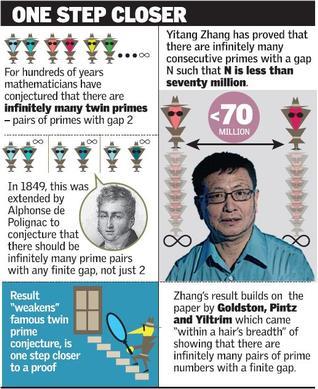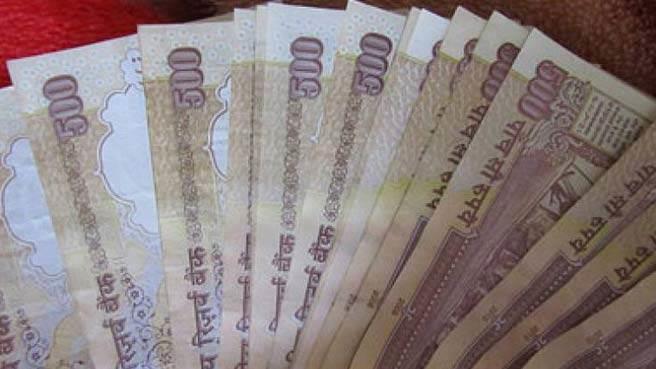May 24, 2013
Yitang Zhang achieves breakthrough in solving the longstanding problem of twin prime conjecture.

There has been a breakthrough in number theory, with Chinese mathematician Yitang Zhang coming up with a result that is seen as a step towards solving the twin prime conjecture, a longstanding problem in mathematics.
May 24, 2013
Yitang Zhang achieves breakthrough in solving the longstanding problem of twin prime conjecture.

There has been a breakthrough in number theory, with Chinese mathematician Yitang Zhang coming up with a result that is seen as a step towards solving the twin prime conjecture, a longstanding problem in mathematics.
And, coming up from relative obscurity and humble origins as he does, the 50-year-old shares elements of the story of Srinivasa Ramanujan closer home in India.
What this lecturer of the University of New Hampshire in the United States has solved is very close to the famous twin primes problem: the question whether there are infinitely many pairs of consecutive prime numbers that differ by 2.
The paper has been accepted for publication by Annals of Mathematics in record time — three weeks since it was submitted. It will be published in a forthcoming issue.
Dr. Zhang has come up with proof that there is an infinite number of consecutive prime numbers that are separated by a gap bounded by 70 million. Thus, he has shown that there is a number N smaller than 70 million such that there are infinitely many prime numbers that differ by N. It is a long way off from 2 to 70 million, but the important thing is that the gap is not infinite but a known number — 70 million. This is a major step towards solving, or as a mathematician would put it, “weakening,” the twin prime conjecture.
Says D. Surya Ramana, mathematician of the Harish-Chandra Research Institute, Allahabad: “Zhang’s result is marvellous because it is for the first time that we know that there are infinitely many pairs of prime numbers (p, q) with p > q and p-q bounded by a fixed constant, which in the case of Zhang is around 70 million, which is of course very large, but that does not all detract from the importance of the result.”
Dr. Zhang has shot to fame in Ramanujan-like fashion. A Chinese immigrant in the U.S., he received his doctorate from Purdue University. His dissertation was not even on prime numbers. After his Ph.D, he was unable to get an academic job but continued to think about numbers as he worked as an accountant and even in a ‘Subway’ sandwich outlet, until he got the job at the University of New Hampshire. His dedication finally paid off; after three years of labouring over the problem, the answer came to him when he took a break, shortly before leaving for a concert.
Srinivasa Ramanujan (1887-1920), from Tamil Nadu, had almost no formal training in pure mathematics and was an office worker in Madras (now Chennai), but made extraordinary contributions to mathematical analysis, number theory, infinite series, and continued fractions.
Says R. Balasubramaniam, number theorist and Director of the Institute of Mathematical Sciences, Chennai: “[Professor Zhang’s] is a fantastic result. A major step in this direction was taken by Goldston, Pintz and Yildrim eight years ago, so this result would have been expected. But not this soon — this is stupendous!”
Courtesy: Hindu
















































































































